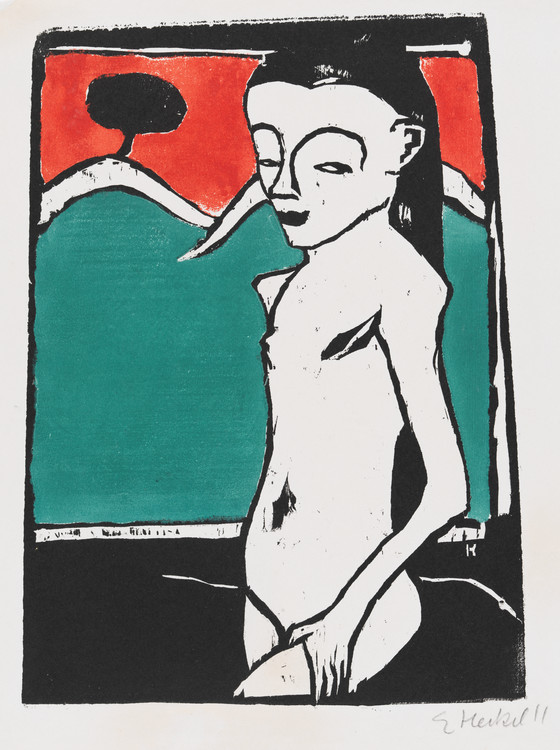Standing child

© Nachlass Erich Heckel/Artists Rights Society (ARS), New York/VG BILD-KUNST, Bonn
Please log in to add this item to your gallery.
View comments
No comments have been posted yet.
Add a comment
Please log in to add comments.
Please log in to add tags.
* Nearly 20,000 images of artworks the museum believes to be in the public domain are available to download on this site.
Other images may be protected by copyright and other intellectual property rights.
By using any of these images you agree to LACMA's Terms of Use.
Standing child
Alternate Title: Stehendes Kind
Portfolio (orig. lang.): Die Brücke VI
Portfolio (translation): The Bridge VI
Plate: plate 1
Germany, 1910Prints; woodcuts
Woodcut printed in green, red and black on paper
Image: 14 3/4 x 10 13/16 in. (37.47 x 27.46 cm) irregular; Sheet: 16 13/16 x 12 11/16 in. (42.70 x 32.23 cm)
The Robert Gore Rifkind Center for German Expressionist Studies (M.82.288.370b)
Not currently on public view